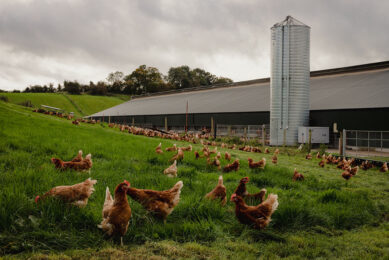Poultry market outlook recovers, national differences remain

After a very challenging quarter, the outlook for the global poultry industry is gradually improving, although poultry trade remains very competitive.
Rabobank’s latest poultry report notes the industry is facing major challenges due to Covid-19 market disruption, very high and volatile feed prices, avian influenza in the northern hemisphere, and some volatility from nations affected by African Swine Fever.
But Rabobank believes that as nations reopen their foodservice sectors, the poultry industry will start to recover as more than a third of global poultry consumption is linked to this area. This in turn will help global traders as stock levels fall.
Countries that have shown the most disciplined supply growth have seen significantly improving market conditions, such as in the United States, Mexico, and Japan. However, oversupply remains an issue for other regions and nations, such as the EU, South Africa, and Thailand
Nan-Dirk Mulder, senior analyst Animal Protein at Rabobank, said: “Key for producers in the first half of 2021 will be to have a very disciplined supply growth, a focus on cost reduction via procurement, production efficiency and feed formulation, as well as being prepared for big swings in demand driven by Covid-19 related government decisions.”
Covid-19: Impact on the global poultry sector
The coronavirus has had a huge impact on daily life from the man on the street to businesses. And the poultry sector, even more essential than ever, has not gone unscathed. Keep up-to-date.
Global grain and oilseed prices have increased further during quarter 1 of this year, driven by La Nina-upended weather in key producing countries and an unprecedented and long-lasting import demand generated from China. This is a big challenge for producers, as feed represents 60-70% of the cost of production, but Rabobank believes that while prices will remain high, they will soften slightly from their current levels.
African Swine Fever could impact local poultry producers and global trade
ASF’s impacts on pork production also have an ongoing impact on poultry. Both China and Vietnam – severely hit by ASF – are recovering with China expected to increase pork production by 8-10% and Vietnam by 8-12%. This could impact both local poultry producers and global trade.
“China’s lower than expected pork production in Q1 2021 and low chicken production levels supported a chicken price recovery in Q1, but we think that the ongoing expansion of pork, together with further growth of chicken production, will deflate prices later this year. This will also impact import volumes in China,” said Mulder.
Avian influenza
Avian influenza is an issue for poultry producers worldwide. With this interactive map, Poultry World tracks the outbreaks and keeps you up-to-date on the latest information. Check it out…
Bird flu may lead to price rallies in some regions
The EU, UK, Russia and South Korea have all been impacted by avian influenza, which has led to short supplies in South Korea, Japan and Russia. But it has also pushed producers in the EU to place fewer birds, damaging local businesses in these countries. From a market perspective, it has also led to some upside pressure on prices. As well as the impact on local supply, AI also disrupts global trade in poultry meat, DOC and hatching eggs. This has been especially the case for restrictions put on key exporters from Europe, such as the Netherlands, Poland, France and the UK.
Later in the year, this may lead to price rallies in some regions if disrupted supply chains with high feed prices cannot adequately follow recovering markets. This is already taking place in Russia, South Korea and the Philippines, where governments have started to intervene to curb price inflation fears.
 Beheer
Beheer











 WP Admin
WP Admin  Bewerk bericht
Bewerk bericht